Basic Elements is a premier Fire Protection Service Engineering firm founded in 2009.We are known for providing value engineering and operate with a
Don't wanna be here? Send us removal request.
Text
Erode bus fire incident: A Crucial Reminder on Fire Safety


In the early hours of Thursday, when the bus neared Chithode, the driver, Karthikeyan, noticed a fire in the front portion. He immediately parked the bus along the roadside and alerted the passengers and his crew to deboard the bus. They then notified the fire and rescue personnel through the police and attempted to douse the fire.
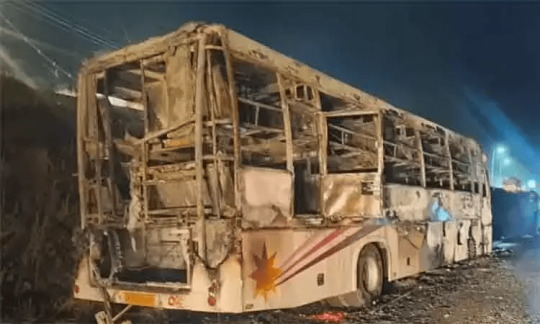
Chithode Police are investigating the cause of the fire. The fire may have started in the bus’s front portion, according to preliminary reports, but more investigation is needed.
The incident serves as a stark reminder of the importance of robust fire safety measures, especially in public transportation. Stringent fire safety protocols and adherence to best practices are needed to ensure passenger safety and prevent catastrophic events.
Preventive Measures:
To prevent such incidents, it is crucial to implement stringent fire safety measures specifically for vehicles, including
Conducting regular fire risk assessments and audits for all vehicles.
Ensuring proper maintenance and inspection of the vehicle’s electrical systems and components to prevent short circuits.
Installing fire extinguishers in accessible locations within the vehicle and training the driver and crew on their proper use.
Implementing fire-resistant materials in the vehicle’s construction to reduce the spread of fire.
Regularly checking and maintaining the vehicle’s engine and fuel system to prevent leaks and overheating.
Having a clear and well-practiced evacuation plan, ensuring all passengers are aware of emergency exits and procedures.
Installing smoke detectors and fire alarms within the vehicle to provide early warning of any fire incidents.
Conducting regular fire drills and training sessions for drivers and crew to ensure preparedness in case of an emergency.”
Benefits of Fire Safety:
While the initial investment in fire safety measures may seem substantial, the advantages of robust fire protection systems far outweigh the costs. The consequences of fires can be devastating, resulting in loss of human life, severe injuries, extensive property damage, and business disruptions.”
Prioritizing fire safety can safeguard lives, protect property, ensure continuity, maintain compliance, enhance value, and foster a sense of security. At Basic Elements, we firmly believe that fire safety should never be compromised. Our team of experts specializes in conducting comprehensive fire safety audits, identifying potential risks, and recommending tailored solutions to mitigate those risks effectively. Don’t wait until it’s too late. Take proactive steps to protect your people, property, and business from the devastating consequences of fires. Prioritize fire safety today and safeguard your future. Contact Basic Elements to schedule a fire safety assessment and ensure your establishment is fully prepared to prevent and respond to fire emergencies.
0 notes
Text

Himachal Pradesh’s Una Inferno teaches us the importance of fire safety
Himachal Pradesh’s Una
There have been several fire incidents in Himachal Pradesh, leaving a trail of destruction in their wake. Approximately 30 houses were destroyed by a fire that erupted in Ward 10 of the Lal Singh area in Una. In another incident, a fire broke out at a house in Shimla’s Rohru subdivision, spreading to 8 neighboring houses.
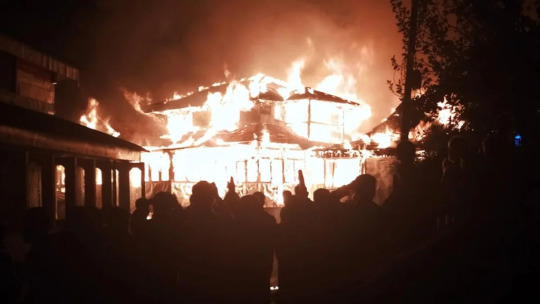
Residents Safe, but Properties Destroyed
As residents evacuated their homes quickly, no casualties were reported in either incident. As the fire spread rapidly from one house to another, particularly in the wooden houses of the Tikker area’s Daroti village, the properties were severely damaged.
Both fires are currently under investigation. Preliminary findings suggest that Rohru’s fire was caused by a short circuit, while Una’s fire is still unknown.
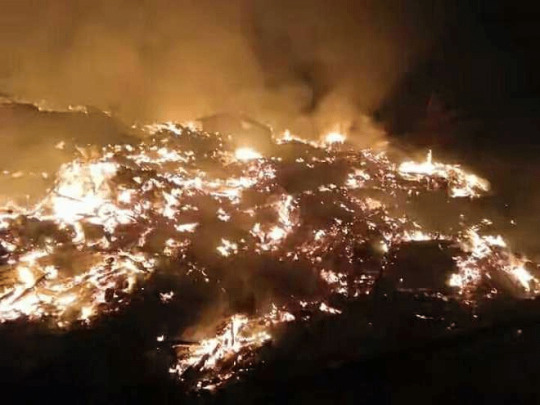
The incidents serve as a poignant reminder of the need for robust fire safety measures in both residential and commercial settings. Preventing such catastrophic events requires adequate fire prevention strategies, including regular inspections, proper electrical maintenance, and readily accessible firefighting equipment.
Basic Elements Solutions is committed to ensuring fire safety protocols are robust in order to safeguard people and property. Through comprehensive fire safety audits and tailored solutions, we can reduce risks and protect against devastating fires. Don’t hesitate to reach out to us today so we can help you improve the safety of your establishment.
Authorities and citizens must prioritize fire safety in Himachal Pradesh in the wake of these devastating fires. Firefighting techniques, rapid response, and community awareness are essential to mitigating risks posed by fires and protecting lives and property. Hopefully, these incidents will serve as a wake-up call for proactive fire safety measures in our communities.
To learn how to prevent and respond to fire emergencies, contact Basic Elements to schedule a fire safety assessment.
1 note
·
View note
Text
Creating an Effective Emergency Evacuation Procedure Checklist: A Comprehensive Guide
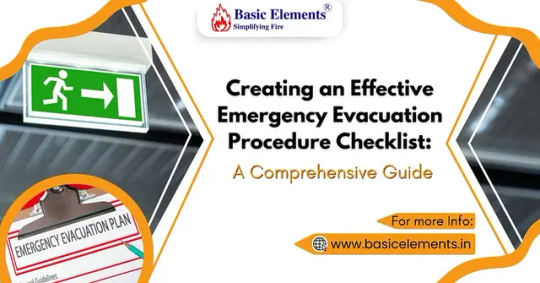
Emergency Evacuation Procedure Checklist are vital for ensuring the safety and well-being of individuals in the event of a crisis or disaster. Having a detailed evacuation plan checklist is essential to help organizations and individuals respond effectively to emergencies. This checklist typically includes important steps such as identifying emergency exits, establishing assembly points, assigning responsibilities, and communicating with relevant parties. By following an evacuation plan checklist, you can streamline the evacuation process, minimize confusion, and ensure that everyone knows what to do in case of an emergency. It helps in maintaining order and preventing panic during critical situations.
Moreover, having an Emergency Evacuation Procedure Checklist is key alongside evacuation procedures. It helps organizations get ready for different emergencies in advance. This involves evaluating risks, running drills, keeping emergency supplies, and regularly updating plans. Being well-prepared with thorough checklists is vital for protecting lives and property during emergencies. Tailor these lists to your needs for a prompt and effective response when it counts.
The key components of an emergency evacuation procedure checklist include:
1. Determining primary and secondary escape routes for different scenarios.
2. Establishing assembly points for accountability to ensure all occupants are safely evacuated.
3. Assigning roles and responsibilities to staff members to efficiently execute the evacuation plan.
4. Identifying special needs or considerations for vulnerable individuals, such as mobility-impaired or elderly occupants.
5. Ensuring access to necessary equipment and resources like fire extinguishers, first aid kits, and emergency lighting.
6. Communicating procedures clearly to all occupants through training sessions, drills, and signage. By incorporating these components into your emergency evacuation procedure checklist, you can effectively prepare your organization for potential emergencies and ensure the safety of everyone involved.
The Role of Training and Drills in Implementing the Checklist Effectively
Training and drills play a crucial role in effectively implementing Emergency Evacuation Procedure Checklist situations such as evacuation. By conducting regular evacuation drills, emergency response training, evacuation simulation exercises, and participating in an emergency preparedness training program, individuals and teams can familiarize themselves with the checklist procedures, enhance their skills, and improve their readiness to respond promptly and efficiently during real emergencies.
These activities help reinforce the importance of following the checklist steps accurately, identify any gaps or areas for improvement in the process, and ensure that all team members are well-prepared to handle any unforeseen circumstances with confidence. Ultimately, training and drills are essential components of successful checklist implementation for ensuring a safe and organized response during critical situations.
Tips for Reviewing and Updating Your Emergency Evacuation Procedure Checklist
Regularly reviewing and updating your emergency evacuation procedure checklist is crucial for ensuring the safety and effectiveness of your evacuation plans.
Here are some tips to help you stay on top of this important task:
1. Schedule Regular Reviews: Set a recurring schedule for reviewing your emergency evacuation procedures checklist. This could be quarterly, semi-annually, or annually, depending on the size and complexity of your organization.
2. Engage Stakeholders: Involve key stakeholders in the review process, including employees from different departments, safety officers, and emergency response teams. Their input can provide valuable insights and help identify areas for improvement.
3. Conduct Mock Drills: Regularly conduct mock evacuation drills to test the effectiveness of your procedures in real-life scenarios. Use these drills as opportunities to identify any gaps or weaknesses in your plan.
4. Stay Informed: Keep abreast of any changes in regulations, best practices, or local emergency response guidelines that may impact your evacuation procedures. Update your checklist accordingly to ensure compliance.
5. Document Changes: Document any revisions or updates made to your evacuation procedure checklist. Maintain clear records of when changes were implemented and communicate them effectively to all relevant parties.
By following these tips and staying proactive in reviewing and updating your emergency evacuation procedure checklist regularly, you can help ensure that your organization is well-prepared to respond effectively in case of an emergency situation.
Incorporating Technology into Your Emergency Evacuation Planning with Digital Checklists
Incorporating technology into your emergency evacuation planning can greatly enhance the efficiency and effectiveness of your procedures. By utilizing digital checklists and mobile emergency evacuation apps, you can streamline the process and ensure that all necessary steps are taken in a timely manner.
Digital evacuation procedure checklists allow you to create detailed lists of tasks that need to be completed during an evacuation. These checklists can be easily accessed on various devices, such as smartphones or tablets, making it convenient for staff members to follow along and mark off each task as it is completed. Mobile emergency evacuation apps take this a step further by providing real-time updates, notifications, and communication tools during an emergency situation. These apps can help coordinate evacuations, track the status of individuals or groups, and provide important information such as escape routes or safe zones.
By incorporating technology into your emergency preparedness plans, you can improve response times, ensure accountability, and ultimately enhance the safety of everyone involved. It’s important to regularly update and test these digital tools to ensure they are functioning properly when needed most.
In conclusion, safety comes first. Having a well-prepared emergency evacuation checklist is crucial to keep everyone safe during emergencies.
We at Basic Elements are at the forefront of management solutions
#fire safety#firesafety#fire#fireprevention#emergencypreparedness#workplacesafety#fire salamander#fire emblem#basicelements#firefighter
1 note
·
View note
Text
Enhancing Fire Safety Exploring Types of Emergency Communication Systems
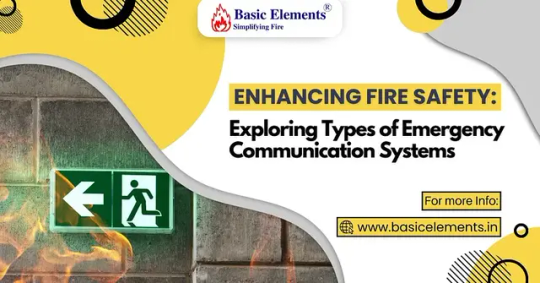
Fire safety is paramount in any environment, whether it’s a bustling office building, a school campus, or a residential complex. When a fire breaks out, effective communication can mean the difference between orderly evacuation and chaos. This is where emergency communication systems play a crucial role. In this article, we delve into the various types of emergency communication systems designed to ensure swift and clear communication during fire emergencies.
Importance of Emergency Communication Systems: In the event of a fire, every second counts. Emergency communication systems are essential tools for alerting occupants about potential dangers and guiding them to safety. These systems provide timely warnings, instructions, and updates, helping people make informed decisions and facilitating efficient evacuation procedures.
Types of Emergency Communication Systems:
Fire Alarm Systems: Fire alarm systems are the backbone of emergency communication in fire safety. They detect smoke, heat, or flames and trigger audible and visual alarms to alert occupants of the building. Modern fire alarm systems are equipped with advanced features such as voice evacuation capabilities and integration with other emergency communication devices.
Public Address (PA) Systems: PA systems are widely used for broadcasting emergency messages in large facilities. During a fire emergency, PA systems can deliver clear and concise instructions to occupants, directing them to safe evacuation routes or providing updates on the situation. PA systems can be integrated with fire alarm systems for seamless communication.
Voice Evacuation Systems: Voice evacuation systems use pre-recorded or live voice messages to guide occupants during emergencies. These systems offer personalized instructions, such as directing people with mobility impairments to designated evacuation areas or advising occupants to stay in place if evacuation is not safe. Voice evacuation systems enhance communication clarity and reduce panic during fire incidents.
Emergency Notification Systems (ENS): ENS utilize various communication channels, including text messages, emails, and phone calls, to notify building occupants and emergency responders about fire incidents. These systems ensure that relevant parties receive timely alerts and updates, enabling swift response and coordination efforts.
Two-Way Radios: Two-way radios enable direct communication between building occupants, emergency response teams, and designated personnel during fire emergencies. These portable devices facilitate real-time communication, allowing for quick decision-making and coordination of evacuation procedures. Two-way radios are particularly useful in large or complex environments where traditional communication methods may be inadequate.
Mobile Applications: Mobile applications have emerged as valuable tools for fire safety communication. These apps can send push notifications, provide evacuation maps, and offer real-time updates on fire incidents. Mobile applications empower individuals to stay informed and take appropriate actions in the event of a fire emergency, enhancing overall safety and preparedness.
Components of Emergency Communication Systems: Emergency communication systems consist of several key components, including control panels, speakers, pull stations, strobes, and communication devices. These components work together to detect fires, initiate alarms, and disseminate critical information to occupants, ensuring a coordinated response to fire emergencies.
Integration with Building Infrastructure: Effective emergency communication systems are seamlessly integrated with building infrastructure, including fire suppression systems, lighting systems, and access control systems. Integration enhances system reliability, ensures consistent messaging across different communication channels, and facilitates centralized monitoring and control of emergency events.
Best Practices for Emergency Communication Systems: To maximize the effectiveness of emergency communication systems, it’s essential to follow best practices such as regular testing and maintenance, clear signage indicating evacuation routes, and providing training to occupants on how to respond to fire emergencies. Additionally, staying updated on advancements in technology and regulatory requirements is crucial for ensuring compliance and enhancing system performance.
Conclusion: Emergency communication systems enhance fire safety by delivering timely warnings, clear instructions, and coordinated responses during emergencies. Understanding various system types and implementing best practices help organizations safeguard occupants and reduce fire impact. Investing in communication infrastructure is a legal and moral imperative to protect lives and property from fires.
1 note
·
View note
Text
Here’s all you need to know about fire safety in healthcare facilities.
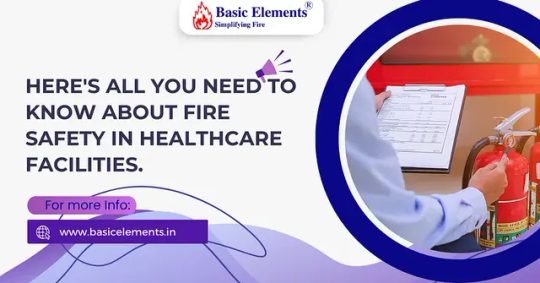
Ensuring fire safety in healthcare facilities, such as hospitals, is critical to protect patients, staff, and visitors.It helps keep everyone, including patients, doctors, and visitors, safe. To do this, hospitals follow special fire safety rules and do a lot to prevent fires from starting. This means making sure all the staff know what to do if there’s a fire, practicing fire drills, and checking the hospital regularly to spot any fire risks early. It’s also smart to have fire safety tools like smoke detectors, sprinklers, and gear for putting out fires ready to go. Plus, teaching everyone in the hospital about how to be safe from fires is key to keeping a safe place for everyone. When we focus on fire safety, we make the hospital a safer spot for everybody and make sure we can keep taking care of patients, even if there’s a fire emergency.
How to Spot and Stop Fire Dangers in Hospitals
Making sure fire safety in healthcare facilities is super important to keep patients, staff, and visitors safe. Hospitals, with all their complex equipment and lots of people, are especially at risk. Things like electrical issues, flammable stuff like oxygen tanks or cleaning products, and even human mistakes can all lead to fires in healthcare settings.
To prevent fires in medical facilities, it is essential to implement robust fire safety measures.
Here are some key steps that can be taken:
1. Conduct regular fire risk assessments: Identify potential hazards and take proactive measures to mitigate risks.
2. Install and maintain fire detection systems: Ensure that smoke detectors, heat sensors, sprinkler systems, and alarms are in place and regularly inspected.
3. Train staff on fire safety protocols: Educate employees on evacuation procedures, firefighting equipment operation, and handling flammable materials safely.
4. Keep emergency exits clear: Maintain unobstructed pathways for swift evacuation during an emergency.
5. Regularly inspect electrical systems: Prevent electrical fires by conducting routine checks on wiring, outlets, and equipment.
6. Store flammable materials properly: Securely store items like cleaning agents or chemicals away from ignition sources.
By making these preventive measures a priority and promoting a safety-conscious culture among everyone in healthcare settings, we can significantly reduce the risk of fires. Don’t forget, being proactive about fire safety not only meets regulations but also saves lives in the end.
Tips for Making a Full Fire Safety Plan for Hospitals and Clinics
Having a strong fire safety plan is very important in places like hospitals. It helps protect everyone there — patients, workers, and visitors — making sure they’re all safe. Here’s what needs to be part of that plan:
Quick Fire Spotting: Use modern technology to find fires fast so we can act right away.
Stopping Fires Quickly: Create simple plans to stop fires fast so they don’t spread and cause a lot of damage.
Putting Out Fires: Make sure your building has the right tools and knows how to use them to put out fires quickly, keeping everyone safe.
Simple Evacuation Plans: Make evacuation plans that consider the different needs of patients, like those who have trouble moving or need special equipment, so that everyone can get to safety in an emergency.
Practice and Learn Regularly: Have drills and training often so that all staff members know exactly what to do if there is a fire, making them more prepared and confident in handling emergencies.
Work Together with Fire Departments: Make sure to work closely with the local fire departments and follow the rules made by important safety organizations to make sure everything meets fire safety standards.
By focusing on these key areas, healthcare places can greatly improve their readiness for fire emergencies, making sure that patients, workers, and visitors are all safe.
How Training Employees Helps Keep Fire Safety Up to Date
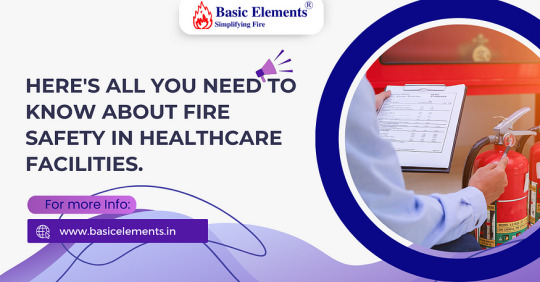
Teaching hospital staff how to stay safe during a fire, practicing fire drills often, and showing medical workers what to do in an emergency are key to keeping everyone safe, including patients and workers. By making sure everyone knows what to do and practicing together, hospitals can be better ready if a fire or another emergency happens. These steps are important because they make the place safer and give employees the confidence they need in tough times. Putting money and effort into good training and practice activities is a smart move. This way, your team will know exactly what to do during an emergency.
New Technologies and Tools to Improve Fire Safety in Hospitals and Clinics
Keep your hospital safe with the latest fire alarm systems made just for places like yours. We have special firefighting tools that are perfect for hospitals and other healthcare places, making sure everyone is protected if there’s a fire. We use new technology to make fire safety better in hospitals. This helps keep your patients and workers safe, and it also makes sure your hospital follows all the safety rules. You can count on our equipment to create a safe place for everyone in your healthcare facility
Making Fire Safety Important to Keep Patients and Staff Safe in Hospitals
Absolutely, prioritizing fire safety in healthcare facilities is crucial to protect both patients and staff. Here are some steps to ensure a safe environment:
1. Regular Inspections: Conduct routine inspections of fire extinguishers, alarms, and emergency exits to ensure they are functioning properly.
2. Staff Training: Provide comprehensive fire safety training for all employees so they know how to respond in case of an emergency.
3.Emergency Drills: Conduct regular fire drills to practice evacuation procedures and ensure everyone knows what to do in the event of a fire.
4. Proper Signage: Mark all emergency exits, evacuation routes, and firefighting equipment for easy access during a crisis.
5. Fire Safety Equipment: Invest in high-quality fire detection systems and suppression equipment to quickly contain any potential fires.
6. Collaboration with the Fire Department: Establish strong relationships with local fire departments for additional support and guidance on improving safety measures.
By following these steps diligently, healthcare facilities can create a safer environment for everyone inside while minimizing the risks associated with fires.
#basicelements#firesafety#emergencypreparedness#fire#fire safety#workplacesafety#fireprevention#fire emblem#fire salamander#firefighter
1 note
·
View note
Text
Fire breaks out in Karimnagar; 4 gas cylinders explode, resulting in the destruction of 20 huts.

The occurrence, documented at approximately 10:50 am, resulted in the detonation of 4–5 gas cylinders, as per the report by T Venkanna, the Fire Officer of Karimnagar District.
A fire broke out in the Karimnagar region of Telangana on Tuesday, causing damage to approximately 20 huts. Thankfully, there have been no reported casualties as of yet, according to a fire service official.
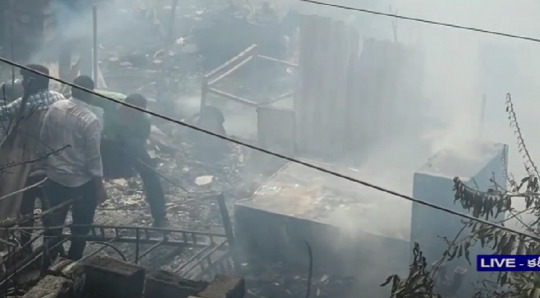
Venkanna told ANI, “At about 10.50 am, we got the fire call. Immediately in a quick response, our fire brigade reached the spot and controlled the fire. We have also called municipal water tankers for assistance. Around 20 huts were burnt in the fire. Around 4–5 gas cylinders exploded in the fire.”
https://x.com/ANI/status/1759859114262339886?s=20
Additional information is awaited.
Previously, an explosion occurred in Kondurg village, Rangareddy district, Telangana, injuring three individuals on Monday. Police confirmed the injured were taken to the hospital for medical attention.
Watch the video by clicking here.
youtube
Krishna, Sub Inspector of Kondurg Police Station, stated, “An iron melting in Batti(Furnace) no 4 in the Scan Energy Iron company exploded in Kondurg, Rangareddy District. Three people are injured. They were shifted to Shivram Nagar Hospital in Shadnagar.”
The official added that fire tenders promptly arrived at the scene and extinguished the flames. A case will be registered regarding the incident.
Had IGNICOP® been installed in the huts in Karimnagar, it would have been constantly keeping an eye on the fire safety systems’ health, like fire alarms and pressure levels. If anything went off track or malfunctioned, IGNICOP® would’ve swiftly alerted stakeholders and first responders through SMS and calls, enabling quick action to put out the fire before it spread and stopped the gas cylinders from exploding. This proactive fire safety strategy could’ve averted the disaster and reduced the community’s impact.
It’s crucial for communities and businesses to prioritise fire safety to prevent future disasters. Reach out to Basic Elements Solutions today to explore how we can help safeguard lives and property from fire hazards.
#FireSafety#commercialproperty#BuildingManagement#lifesafety#protectyourbusiness#peaceofmind#basicelements#FireSafetyTips#fireprotectionservices#fireprotectionsystems#Youtube
1 note
·
View note
Text
Maximize Safety: Essential Training for technicians performing fire alarm tests

In every building, especially places with a higher chance of fire like hospitals and apartment buildings, the loud sound of a fire alarm is very important. It’s not just a simple warning. It tells us that many safety measures are working together to keep people and things safe. The people who check and take care of these fire alarms have a very important job. They need to make sure everything works perfectly. This is why they must get special and thorough training.
Next, we’ll explore why these skilled workers are so important, why their training matters, and what owners of businesses, hospitals, and apartments need to think about when putting money into making sure their fire alarm technicians are well-prepared.
The Crucial Role of Training for technicians performing fire alarm tests

Fire alarm systems need to be checked and tested often.
Fire alarm test technicians do these checks.
They follow strict rules to make sure the alarm works right.
Their job is very important for keeping people safe.
They make sure all parts of the alarm system work together well.
They check if the alarm is loud enough and if exit paths are clear.
Good working alarms can help manage fires better.
The Importance of Proper Training for technicians performing fire alarm tests
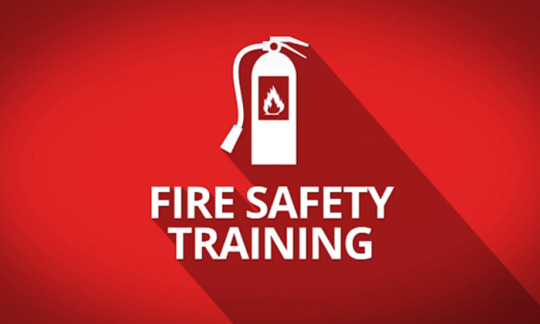
A fire alarm technician has a very important job because even small mistakes can cause big problems. This is why their training is very important and needs to keep happening so they can learn about new technology and rules.
Understanding the rules and standards for fire alarms is very important. This is just the start for a technician. They also need to understand how to keep people safe from fires. This means knowing about the problems that could happen in different places they work. Technicians also need to know exactly what the companies that make the fire alarms want them to do with their equipment.
Key Elements of Comprehensive Training Programs for Technicians Performing Fire Alarm Tests
A good training program for fire alarm technicians should cover more than just how to use the testing tools. It should include:
Regulatory and Compliance Training: Understanding the laws and regulations governing fire alarm systems.
System Familiarization: Participants should be well-versed in the different types of systems they will encounter, be it in a small commercial building, a complex hospital setting, or a sprawling apartment community.
Practical Training Exercises: Hands-on experiences that simulate real-world testing scenarios enhance troubleshooting and decision-making under pressure.
Communication Skills: Technicians must be adept at interacting with building managers, occupiers, and other stakeholders, often in stressful conditions.
Continual Education: Regular refreshers and updates on evolving standards, best practices, and cutting-edge technologies should be integral to an ongoing education plan.
Common Challenges Faced by Technicians During Fire Alarm Testing and How Proper Training Can Address Them
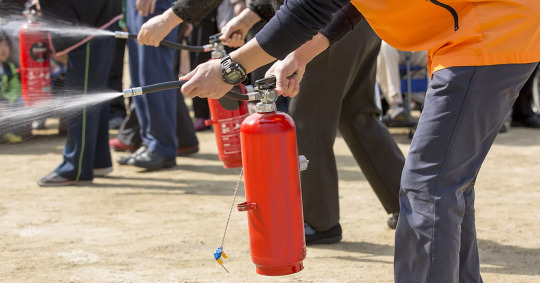
Fire alarm technicians have a very important job because they help keep people and places safe. Their job can be tough and they might have different problems depending on where they work. Some common problems they face include:
Adapting to Different Fire Alarm Systems: There is a wide variety of fire alarm systems in use, each with its own set of specifications, operations, and maintenance requirements. Technicians must be adept at handling these diverse systems.
Navigating Complex Buildings: In large or complex buildings, such as hospitals or industrial plants, the layout can significantly complicate testing and maintenance tasks. Finding and accessing all components of the fire alarm system in such environments requires both skill and experience.
Keeping Up with Technological Advances: The technology behind fire safety is constantly evolving. Technicians must stay updated on the latest advancements in fire alarm systems and safety protocols to ensure they are providing the best service possible.
Handling Emergency Situations: During a fire alarm test or maintenance work, technicians might encounter real emergencies. Being able to swiftly shift from a testing to an emergency response mode is crucial.
Dealing with False Alarms: Frequent false alarms can desensitize occupants to fire alarm sounds, which is dangerous in actual fire situations. Technicians must meticulously fine-tune systems to minimize false alarms without compromising the system’s sensitivity to real fires.
Ensuring Compliance with Regulations: Fire safety regulations are stringent and vary from one jurisdiction to another. Technicians must be knowledgeable about these regulations and ensure that all systems comply to avoid legal liabilities for their clients.
The Future of Technician Training in Fire Safety Technology’s Evolving Landscape
Fire safety technology keeps changing and getting better. Now, we have wireless systems, Internet of Things (IoT) gadgets, and smart building tools that are making things different. This means people who work on fire safety need to keep learning new things.
They should take courses that teach them about these new tools and how to work with other types of safety gear like sprinklers and emergency lights. This helps them get a full picture of what needs to be done to keep buildings safe and be ready for new challenges.
Investing in regular technician training is vital for successful fire alarm testing and building safety.
In the area of fire safety, it’s very clear that the people who regularly check and take care of
alarm systems are extremely important. Whether they are quickly dealing with a small fire or stopping a false alarm that could cause a lot of worry, these experts play a key role in keeping things safe and normal.
It’s important to make education for these people a top priority. They should keep learning for as long as they work with alarm systems, so they are always ready and up-to-date. For owners of businesses, hospitals, and apartments, this means they must always support their staff’s learning. This helps ensure that their places are safe, thanks to the skilled and dedicated people who protect them first.
In summary, fire alarm technicians are important allies in keeping your place safe. When you train them, you’re not just spending money, but you’re also making your business stronger and showing that you truly care about everyone’s safety. They are a key part of your team, helping you aim for the best with all the tools and support possible.
It’s crucial for communities and businesses to prioritise fire safety to prevent future disasters. Reach out to Basic Elements Solutions today to explore how we can help safeguard lives and property from fire hazards.
#fire#fire safety#fireprevention#workplacesafety#firesafety#emergencypreparedness#basicelements#fire emblem#fire salamander#firefighter
0 notes
Text
A big fire started in a furniture warehouse in a suburb of Mumbai, but it was put out, and no one was injured.
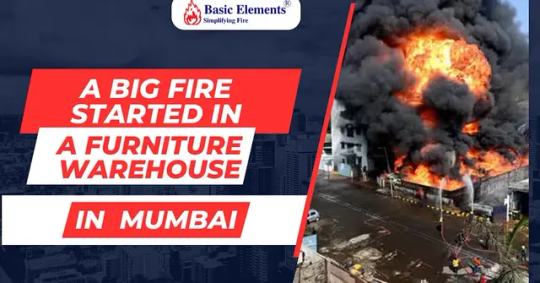
A big fire broke out in a furniture storage place in Goregaon, Mumbai, on Thursday evening. Luckily, no one was hurt or died because of it.
A big fire that started in a furniture warehouse in the Goregaon area of Mumbai, Maharashtra, on Thursday afternoon has been put out, according to officials.
Officials reported that the fire that broke out in a storage unit at Sunteck City, Narayan Plaza around 3:50 pm was put out by 8:15 pm.
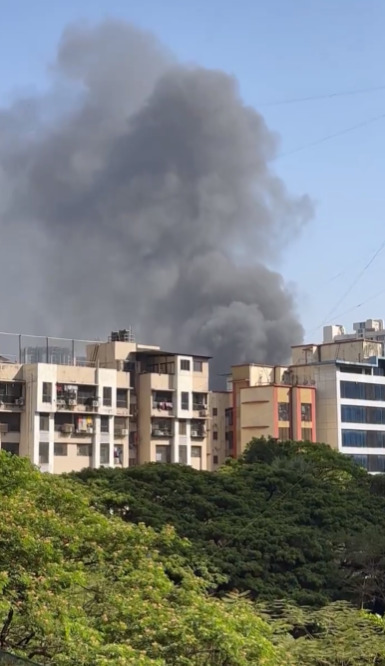
“No injuries or casualties to anyone have been reported in the blaze so far,” the police said earlier.
Photos shared on social media showed thick black smoke coming from the burning building as firefighters worked hard to put out the big flames.
Twitter Link:

“The fire was confined to garments, wood stock, scrap items, and fabrication materials in 10 to 15 shops in the ground-plus-one-storey structure spread over 2,000 square feet. It had temporary and permanent shops along with a lot of furniture items,” an official said.
He said that at least eight fire trucks, more fire brigade vehicles, and an ambulance were sent out.
“The flames were put out after a duration exceeding four hours,” the official mentioned. “The source of the fire remains unknown,” he conveyed.
People living nearby were grateful to the firefighters for acting fast and admired their bravery in handling the fire. Many shared pictures and videos online, highlighting how important it is to be prepared for and safe from fires.
This event reminds us how small mistakes or overlooked details can lead to dangerous situations. It’s very important for both people and companies to pay attention to fire safety. This means checking things regularly, storing things that can catch fire the right way, and having a clear plan for how to get out safely if there’s a fire.
From this event, we can learn important lessons and take necessary steps to protect ourselves better. Making sure our neighborhoods and companies focus on fire safety is really important to stop bad things from happening in the future. Contact Basic Elements Solutions to see how we can work together to protect people and places from the risks of fires.
#fire safety#fire#emergencypreparedness#fire emblem#workplacesafety#firesafety#fireprevention#fire salamander#basicelements#firefighter
1 note
·
View note
Text
Enhancing Fire Safety Exploring Types of Emergency Communication Systems
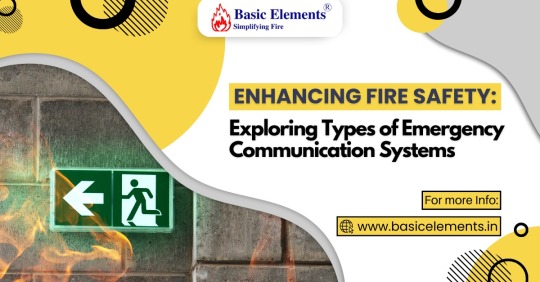
Fire safety is paramount in any environment, whether it’s a bustling office building, a school campus, or a residential complex. When a fire breaks out, effective communication can mean the difference between orderly evacuation and chaos. This is where emergency communication systems play a crucial role. In this article, we delve into the various types of emergency communication systems designed to ensure swift and clear communication during fire emergencies.
Importance of Emergency Communication Systems: In the event of a fire, every second counts. Emergency communication systems are essential tools for alerting occupants about potential dangers and guiding them to safety. These systems provide timely warnings, instructions, and updates, helping people make informed decisions and facilitating efficient evacuation procedures.
Types of Emergency Communication Systems:
Fire Alarm Systems: Fire alarm systems are the backbone of emergency communication in fire safety. They detect smoke, heat, or flames and trigger audible and visual alarms to alert occupants of the building. Modern fire alarm systems are equipped with advanced features such as voice evacuation capabilities and integration with other emergency communication devices.
Public Address (PA) Systems: PA systems are widely used for broadcasting emergency messages in large facilities. During a fire emergency, PA systems can deliver clear and concise instructions to occupants, directing them to safe evacuation routes or providing updates on the situation. PA systems can be integrated with fire alarm systems for seamless communication.
Voice Evacuation Systems: Voice evacuation systems use pre-recorded or live voice messages to guide occupants during emergencies. These systems offer personalized instructions, such as directing people with mobility impairments to designated evacuation areas or advising occupants to stay in place if evacuation is not safe. Voice evacuation systems enhance communication clarity and reduce panic during fire incidents.
Emergency Notification Systems (ENS): ENS utilize various communication channels, including text messages, emails, and phone calls, to notify building occupants and emergency responders about fire incidents. These systems ensure that relevant parties receive timely alerts and updates, enabling swift response and coordination efforts.
Two-Way Radios: Two-way radios enable direct communication between building occupants, emergency response teams, and designated personnel during fire emergencies. These portable devices facilitate real-time communication, allowing for quick decision-making and coordination of evacuation procedures. Two-way radios are particularly useful in large or complex environments where traditional communication methods may be inadequate.
Mobile Applications: Mobile applications have emerged as valuable tools for fire safety communication. These apps can send push notifications, provide evacuation maps, and offer real-time updates on fire incidents. Mobile applications empower individuals to stay informed and take appropriate actions in the event of a fire emergency, enhancing overall safety and preparedness.
Components of Emergency Communication Systems: Emergency communication systems consist of several key components, including control panels, speakers, pull stations, strobes, and communication devices. These components work together to detect fires, initiate alarms, and disseminate critical information to occupants, ensuring a coordinated response to fire emergencies.
Integration with Building Infrastructure: Effective emergency communication systems are seamlessly integrated with building infrastructure, including fire suppression systems, lighting systems, and access control systems. Integration enhances system reliability, ensures consistent messaging across different communication channels, and facilitates centralized monitoring and control of emergency events.
Best Practices for Emergency Communication Systems: To maximize the effectiveness of emergency communication systems, it’s essential to follow best practices such as regular testing and maintenance, clear signage indicating evacuation routes, and providing training to occupants on how to respond to fire emergencies. Additionally, staying updated on advancements in technology and regulatory requirements is crucial for ensuring compliance and enhancing system performance.
Conclusion: Emergency communication systems enhance fire safety by delivering timely warnings, clear instructions, and coordinated responses during emergencies. Understanding various system types and implementing best practices help organizations safeguard occupants and reduce fire impact. Investing in communication infrastructure is a legal and moral imperative to protect lives and property from fires.
For more information visit the site: https://basicelements.in/types-of-emergency-communication-systems/
#fire safety#emergencypreparedness#fireprevention#firesafety#fire salamander#fire emblem#basicelements#workplacesafety#fire#firefighter
0 notes
Text
Mumbai news A fire in a tall building in Kandivali has left two people dead

A big fire happened on the ground level of a nine-story building in Kandivali, Mumbai, Maharashtra’s capital. Two people died and three got hurt, as per news agency ANI on October 23.
The fire department said that Glory Walphati (43) and Josu Gems Robert (8) died. Lakshmi Bura (40), Rajeshwari Bhartare (24), and Ranjan Subodh Shah (76) got burned.
Video Link : https://x.com/ANI/status/1716379193729315252?s=20
The Mumbai Fire Department quickly sent fire trucks to the Pavan Dham Veena Santur building when they got a call about a fire at 12:27 pm today, an official said.
Four fire trucks and other vehicles from the fire department hurried to the place, a city official said.

All the necessary teams, such as Adani Power, the police, Brihanmumbai Municipal Corporation (BMC) ward, and the 108 ambulance service, have been called to help, he said.
According to details from the Times of India, the injured people have been taken to Shatabdi Hospital.
Meanwhile, BJP MLA Sunil Rane mentioned that the police and fire department are investigating how the fire started. He added that after the fire began on the first floor, smoke spread up to six or seven floors, causing significant damage to the building. He stated that they are staying in touch with the authorities for updates.”
Earlier this month, seven people died and over 40 got hurt when a fire broke out in a seven-story residential building in Mumbai’s Goregaon area. Thirty people were saved from the fire.
The fire has mainly affected the electrical wiring and installations, the report mentioned. They haven’t determined the exact cause of the fire yet.
In Kandivali, Mumbai, a fire happened where two people died and three got hurt, the installation of IGNICOP® from Basic Elements could have potentially mitigated the severity of the situation. IGNICOP®, with its proactive monitoring capabilities, could have promptly alerted stakeholders and first responders, facilitating swift action to suppress the fire before it escalated. This could have minimized the loss of life and injuries, as well as reduced the damage to the building
#firesafety#fire#emergencypreparedness#fireprevention#basicelements#workplacesafety#fire safety#fire emblem#fire salamander#firefighter
0 notes
Text
Fire Safety 101: Critical Training Every Employee Needs

🚒 Fire safety isn't just a checklist—it's a commitment to keeping your workplace secure. Dive into our comprehensive guide on fire safety training for employees and discover essential tips to protect your team and assets.
#FireSafetyTraining#EmployeeSafety#WorkplaceSafety#FirePrevention#SafetyTraining#FireDrill#EmergencyPreparedness
0 notes
Text
Fire Safety Audits checklist for industry: The Only Checklist You Need

Don't gamble with fire safety. Use this comprehensive checklist to conduct a thorough audit. Identify and resolve gaps before they turn into a tragedy. Protect lives and property. Schedule your fire safety audit today!
Fire safety is crucial for any industry. An uncontrolled fire can lead to loss of life and property. That's why regular fire safety audits are a must. But conducting an effective audit requires a comprehensive checklist. Without one, it's easy to miss critical inspection points.
So what should your fire safety audit checklist include?
Click here to get the checklist
#FireSafetyAudit#ProtectLives#emergencypreparedness#fire#firesafety#fire safety#workplacesafety#basicelements#firefighter#fireprevention#fire salamander#fire emblem
0 notes
Text
Huge fire covers the Hyderabad factory! After a 14-hour firefight, the blaze at the Inkattedan Biscuit Factory was extinguished
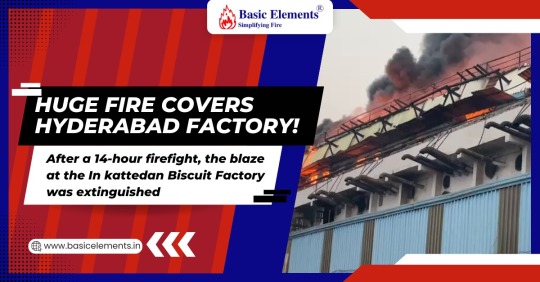
🔥🚒 Big Fire Hits Hyderabad Factory!
🏭 After a 14-Hour Struggle, Fire at Inkattedan Biscuit Factory Finally Out!
😱 No One Hurt, but Shocking Stats: Over 6,000 Fires Since 2019, Causing Loss of Lives and Billions in Damages! 😨💔
#hyderabadfire#factoryblaze#hyderabadnews#firesafety#firesafetyawareness#firesafetyequipment#firefighters#firefighter#fireextinguisher#safety#safetyfirst#safetytraining#safetyofficer#monitoring#remotemonitoring#ecofriendly#ecofriendlydesign#businessowners#smallbusinessowners#businessownership#blackbusinessowners#safetymanagers#emergencymanagement#emergencyservice#emergencykit#emergencyservices#emergencyresponse#emergencydepartment#emergencypreparedness#emergency
0 notes
Text
Fire Extinguishers 101: Your Guide to India's Fire Safety Rules and Requirements

🔥 Fire Safety Alert! 🔥
Adhering to the Bureau of Indian Standards (BIS) is crucial for fire extinguisher manufacturing, testing, and approval. 🏭
👉 Hydrostatic pressure, leakage, and discharge tests are mandatory to guarantee fire extinguisher integrity and performance.
Installation must meet IS 2190:2010 standards for accessibility and safety - it's not just about having extinguishers, but installing them right! 🚒
Fire extinguishers are a must in all commercial and industrial spaces. Regular inspections and maintenance can't be overlooked to ensure they're ready when needed. ⏰
Remember, after 15 years or any use, it's time for a replacement. Don't risk it!
Ignoring these regulations? Be prepared for fines up to Rs 50 lakhs and potential imprisonment. Safety first! ⚖️
Linkedin : #IndiaFireSafety #SafetyRulesIndia #FirePreventionIndia #FireSafetyRequirements #IndiaSafetyStandards
#IndiaFireSafety#FireSafetyRules#FireSafetyRequirements#SafetyFirst#FirePrevention#FireSafetyTips#FireSafetyAwareness#FireSafetyEducation#FireSafetyTraining#FireSafetyStandards#FireSafetyCompliance#FireSafetyRegulations#FireSafetyGuidelines#FireSafetyProcedures#FireSafetyInspection#FireSafetyEquipment#FireSafetyAwarenessCampaign#FireSafetyAwarenessMonth#FireSafetyAwarenessWeek#FireSafetyAwarenessProgram
0 notes
Text
Fire Safety Tips Preventing Accidents in Homes and Workplaces

🔥🚫 Protect Your Apartment, Save Lives! 🚫🔥
Are you fire-ready? Discover essential tips to prevent fire from spreading and safeguard your apartment! From installing smoke alarms to practicing safe cooking, every precaution counts. Don't wait for disaster to strike – take action now to keep your home and community safe. Spread awareness, not fire!
#FireSafety#PreventionIsKey 🏡✨#basicelements#workplacesafety#fireprevention#emergencypreparedness#firefighter
0 notes
Text
How to Prevent Fires From Spreading in the Workplace

Protecting your workplace from the threat of fires is crucial for the safety of employees and the security of your business. Learn how to implement effective fire prevention strategies and safeguard your space with our comprehensive guide. 🔥
Understanding Fire Hazards: Identify potential fire sources like faulty wiring, overloaded circuits, & combustible materials for proactive prevention.
Creating a Fire Prevention Plan: Develop a structured plan for workplace risks, outlining responsibilities, evacuation procedures & shutdown protocols.
Implementing Fire Safety Policies: Establish clear accessible safety policies, communicate & train employees regularly for a safety-conscious culture.
Building a Fire-Safe Environment: Use fire-resistant materials, implement no-smoking policies & store flammable materials properly to reduce fire spread risks.
Electrical Safety Measures: Inspect & maintain electrical equipment regularly, avoid damaged cords, & train employees to reduce electrical fire risks.
Maintenance of Fire Suppression Systems: Regular inspections, testing sprinklers & fire extinguishers, & training staff on system operation for fire readiness.
0 notes
Text
The Powerful Impact of Emergency Communication Systems in Logistics Facilities

Emergency communication systems play a pivotal role in ensuring the safety and security of logistics facilities. These systems serve as a crucial link during times of crisis, enabling swift and effective communication to mitigate risks and protect both personnel and assets. By investing in robust emergency communication infrastructure, logistics facilities can enhance their overall security posture and response capabilities.
The importance of implementing reliable emergency communication systems in logistics facilities cannot be overstated. In the event of an emergency such as a fire, natural disaster, or security threat, quick and clear communication is essential to coordinate evacuation procedures, relay critical information to staff members, and facilitate prompt responses from emergency services.

Moreover, having well-established emergency communication systems not only safeguards the well-being of individuals within the facility but also contributes to operational resilience. By proactively addressing safety concerns through advanced communication technologies, logistics facilities can minimize downtime, reduce potential damages, and uphold their reputation for prioritizing employee welfare.
In today's dynamic logistical landscape where unforeseen challenges can arise at any moment, integrating state-of-the-art emergency communication systems is not just a recommended practice but a strategic imperative for ensuring business continuity and safeguarding lives.
As logistics facility managers evaluate their security protocols, prioritizing the implementation of comprehensive emergency communication solutions emerges as a proactive measure that underscores a commitment to preparedness and resilience in the face of emergencies.
Enhancing Safety Measures with Advanced Emergency Communication Technology

By integrating advanced emergency communication technology into our operations, we can significantly enhance safety measures and improve our overall preparedness for any unforeseen events.
These innovative solutions not only streamline logistics safety protocols but also bolster emergency response systems, ensuring a swift and coordinated reaction in times of crisis. Additionally, the implementation of cutting-edge security features within our logistics facilities will provide an added layer of protection, safeguarding both assets and personnel.
The utilization of such integrated technologies is paramount in mitigating risks and promoting a secure environment for all stakeholders involved. Investing in these advancements demonstrates our unwavering commitment to prioritizing safety and staying at the forefront of industry standards.
With these measures in place, we can proactively address potential challenges and uphold the highest level of security across our operations.
The Cost-Effective Benefits of Implementing Reliable Emergency Communication Systems in Logistics Facilities

Implementing reliable emergency communication systems in logistics facilities not only enhances safety and security but also proves to be a cost-effective investment in the long run.
By having efficient emergency systems in place, logistics facilities can significantly reduce response times during critical situations, ultimately leading to potential life-saving outcomes and minimizing property damage.
The savings achieved through the implementation of such systems, combined with increased operational efficiency and improved return on investment, make a compelling case for prioritizing the adoption of reliable emergency communication technologies in logistics settings. With streamlined safety protocols and enhanced communication capabilities, these facilities can proactively address emergencies while optimizing their overall performance and resilience.
Selecting the Right Emergency Communication System for Your Logistics Facility Needs

When it comes to the safety and efficiency of your logistics facility, selecting the right emergency communication system is paramount. By choosing the appropriate emergency communication technology, you can enhance the overall safety protocols and response mechanisms within your facility.
From ensuring swift communication during crises to streamlining emergency response procedures, investing in the best emergency communication systems tailored for logistics facilities can significantly bolster your operational resilience.
Moreover, the proper selection of logistics facility safety equipment goes hand in hand with implementing robust emergency communication systems. These integrated solutions not only safeguard your workforce but also protect valuable assets and minimize potential disruptions to your operations.
By carefully considering factors such as scalability, ease of integration, and reliability, you can pinpoint the optimal emergency communication technology that aligns with your logistics facility's specific needs. In today's fast-paced environment where unforeseen challenges can arise at any moment, having reliable and efficient emergency communication systems in place is not just a choice but a necessity for maintaining a secure and productive logistics operation.
Conclusion: Empower Your Logistics Facility with Cutting-Edge Emergency Communication Systems Today!
Upgrade your logistics facility with state-of-the-art emergency communication systems now to ensure the safety and efficiency of your operations.
By investing in cutting-edge technology, you can enhance response times during critical situations, streamline communication protocols, and ultimately protect both your employees and assets.
Don't wait until it's too late – take the proactive step today to empower your facility with the latest emergency communication systems available on the market. Your commitment to safety and preparedness will not only benefit your organization but also provide peace of mind for all stakeholders involved.
For More information Visit : https://basicelements.in/powerful-impact-of-emergency-communication-system/
#Fire safety#fire news#fire emblem#fire fighters#emergencypreparedness#workplacesafety#basicelements#fireprevention
0 notes